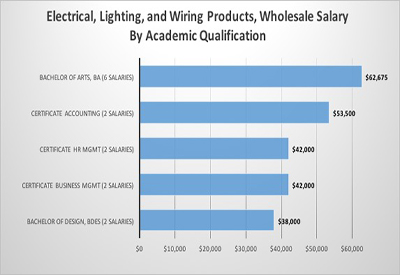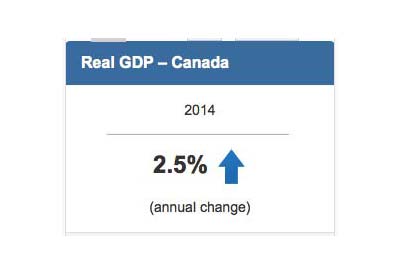Canadian Survey on Business Conditions, Second Quarter 2022

May 30, 2022
Real gross domestic product rose 1.1% in February, the largest monthly growth rate since March 2021. Inflationary pressure remained in April 2022, when the Canadian Consumer Price Index (CPI) rose 6.8% year over year, a slight increase from March 2022 (+6.7%). After surging by nearly 340,000 in February, employment rose by an additional 73,000 in March as Omicron-related restrictions eased, and was little changed in April. After reaching a record low of 5.3% in March, the unemployment rate edged down 0.1 percentage points to 5.2% in April.
From April to early May 2022, Statistics Canada conducted the Canadian Survey on Business Conditions. The survey collects information on the environment businesses are currently operating in and their expectations moving forward.
The combination of inflationary pressures, labour challenges and supply chain issues has impacted businesses in a number of different ways. Businesses continued to expect to face a variety of obstacles over the next three months (see Note to readers) related to rising costs, hiring and recruitment, as well as those related to supply chains. Many businesses that were facing challenges maintaining inventory levels or acquiring inputs, products and supplies, either domestically or abroad, expected these challenges to worsen in the short term. Over the next three months, half of businesses expected their profitability to remain relatively unchanged, nearly two-fifths expected to increase the prices they charge, and over three-quarters expected their number of employees to remain the same.
Businesses are faced with a variety of obstacles and future unknowns
Businesses expected to face challenges related to rising costs. Prices of raw materials purchased by manufacturers operating in Canada, as measured by the Raw Materials Price Index, decreased 2.0% on a monthly basis in April 2022, and rose 38.4% year over year. This followed an 11.8% increase on a monthly basis in March 2022. Meanwhile, average hourly wages for employees rose 3.3% (+$0.99) on a year-over-year basis in April, and energy prices increased 26.4% year over year. The rising cost of inputs, including labour, capital, energy and raw materials, was the most commonly expected obstacle over the next three months (see Note to readers), with 49.7% of businesses expecting it to be an obstacle, relatively unchanged from half (50.3%) of businesses in the first quarter of 2022. The rising cost of inputs was expected to be an obstacle for 3 in 4 businesses in agriculture, forestry, fishing and hunting (75.6%) and manufacturing (75.4%); and for nearly two-thirds of businesses in construction (64.7%) and accommodation and food services (64.0%).
Nearly two-fifths (39.3%) of businesses expected transportation costs to be an obstacle over the next three months. This was expected by nearly two-thirds (64.5%) of businesses in manufacturing and around three-fifths of businesses in wholesale trade (60.5%) and construction (59.8%).
Nearly one-third (32.8%) of businesses expected the cost of insurance to be an obstacle over the next three months. This was expected by about half of businesses in transportation and warehousing (51.3%) and agriculture, forestry, fishing and hunting (49.0%).
Supply chain challenges continue
Over one-quarter (28.2%) of businesses expected difficulty acquiring inputs, products or supplies domestically. Of these businesses, nearly three-fifths (57.3%) expected these challenges to continue for six months or more, up from the first quarter of 2022 (52.4%). Meanwhile, nearly one-third (30.8%) were uncertain how long these challenges will persist. Over half of businesses in agriculture, forestry, fishing and hunting (52.9%) and manufacturing (52.0%) expected difficulty acquiring inputs, products or supplies domestically over the next three months.
Of businesses that expected supply chain challenges (difficulty maintaining inventory levels, or acquiring inputs, products or supplies domestically or abroad) over the next three months, over two-thirds (67.9%) reported that challenges experienced by the business have worsened over the last three months. Leading factors that contributed to worsened supply chain challenges were increased delays in deliveries of inputs, products or supplies (84.1%); increased prices of inputs, products or supplies (78.5%); and supply shortages resulting in fewer inputs, products or supplies being available (75.7%).
While 8.1% of businesses expected supply chain challenges to improve over the next three months, over half (56.0%) expected the situation to remain about the same. Over one-third (35.9%) of businesses expected supply chain challenges to worsen.
More businesses expect to raise prices over the next three months compared with the first quarter of 2022
The CPI rose 3.4% on an annual average basis in 2021, following an increase of 0.7% in 2020. In April 2022, Canadian consumer prices rose 6.8% year over year following a 6.7% increase in March. This was the largest increase since January 1991 (+6.9%). When asked about their expectations over the next three months, nearly two-fifths (39.0%) of businesses expected to raise prices, a continued increase from just over one-quarter (25.9%) of businesses that expected to do so in the fourth quarter of 2021, and over the one-third (35.7%) of businesses that expected to do so in the first quarter of 2022. Over half of businesses in manufacturing (60.3%), retail trade (56.6%), accommodation and food services (54.0%), construction (52.6%), and wholesale trade (52.4%) expected to raise prices over the next three months.
Over half (52.5%) of businesses expected profitability to remain relatively unchanged. Nearly 3 in 10 (29.5%) expected their profitability to decrease over the next three months, while 15.3% expected their profitability to increase. Expectations on future profitability differed by industry. Nearly half (49.3%) of businesses in accommodation and food services and over two-fifths (43.6%) of businesses in transportation and warehousing expected profitability to decrease. Meanwhile, nearly one-quarter of businesses in arts, entertainment and recreation (23.9%) and manufacturing (22.0%) expected profitability to increase.
Over three-quarters (76.9%) of businesses expected to retain the same number of employees over the next three months, similar to 77.8% during the first quarter of 2022. Conversely, 5.0% of businesses expected their number of employees to decrease, down from 8.1% in the first quarter. In accommodation and food services, 8.3% of businesses expected a decrease in the number of employees over the next three months.
Businesses have recruitment, retention and training plans to address workforce-related obstacles
Businesses have been facing obstacles related to the workforce. The labour force participation rate—that is, the share of the population aged 15 and older who are either employed or unemployed—was 65.3% in April 2022. Excluding a dip in January 2022, the participation rate has hovered around its pre-COVID-19 February 2020 level since September 2021. Recruiting skilled employees was expected to be an obstacle over the next three months for nearly two-fifths (36.9%) of all businesses, led by those in construction (49.5%), manufacturing (47.4%), and accommodation and food services (46.3%). In addition, shortage of labour force was expected to be an obstacle for over one-third (35.0%) of businesses, while retaining skilled employees was expected to be an obstacle for over one-quarter (27.6%).
Of businesses that expected to have labour-related obstacles (shortage of labour force, recruiting skilled employees or retaining skilled employees) over the next three months, over half (54.6%) expected these obstacles to lead to management working increased hours, while nearly half (47.3%) expected existing staff to work increased hours as a result. Further expected impacts of labour-related obstacles included limitation on the businesses’ growth (39.4%), hiring less-suitable candidates (37.4%), and delays in providing orders to customers (28.5%).
In terms of vacant positions, 8.8% of businesses expected to have more job vacancies over the next three months. However, 24.6% of businesses in accommodation and food services expected to have more vacant positions, nearly triple the proportion of all businesses.
Businesses anticipate inflation to be a bigger issue when discussing wage increases with employees
In the context of a tightening labour market, average hourly wages for employees rose 3.3% (+$0.99) on a year-over-year basis in April, similar to the growth observed on a year-over-year basis in March (+3.4%). Meanwhile, in April, the CPI was up 6.8% on a year-over-year basis. Over half of businesses (55.2%) expected inflation to be a bigger issue when discussing wage increases with employees over the next 12 months, with over three-quarters (76.1%) of businesses in accommodation and food services and 7 in 10 (70.9%) businesses in manufacturing expecting the same.
Businesses expect increases in energy expenses
Year over year, consumers paid 36.3% more for gasoline in April. Meanwhile, prices for natural gas rose 22.2% and prices for fuel oil and other fuels rose 64.4% year over year in April. Overall, consumer energy prices increased 26.4% year over year. Nearly half (44.0%) of businesses expected increases in energy expenses over the next three months. Some of the leading strategies these businesses planned to adopt in light of any increases were raising prices of goods and services offered (56.8%); changing business practices or processes to reduce energy consumption (18.7%); investing in or switching to energy-efficient technologies (8.8%); and reducing purchases of inputs, either energy- or non-energy-related (8.0%).
Overall position now compared with 2019
Two-thirds (36.9%) of businesses reported that they were in a similar position now compared with 2019, led by businesses in real estate and rental and leasing (47.3%), construction (41.1%), and health care and social assistance (41.0%). Over one-quarter (27.3%) of businesses reported that they were in a better position overall now compared with 2019, led by businesses in professional, scientific and technical services (38.4%); manufacturing (34.7%); and finance and insurance (33.4%). Meanwhile, 27.7% of businesses reported that they were in a worse position overall now compared with 2019. This was led by businesses in accommodation and food services (46.0%); transportation and warehousing (35.1%); and arts, entertainment and recreation (34.3%).











